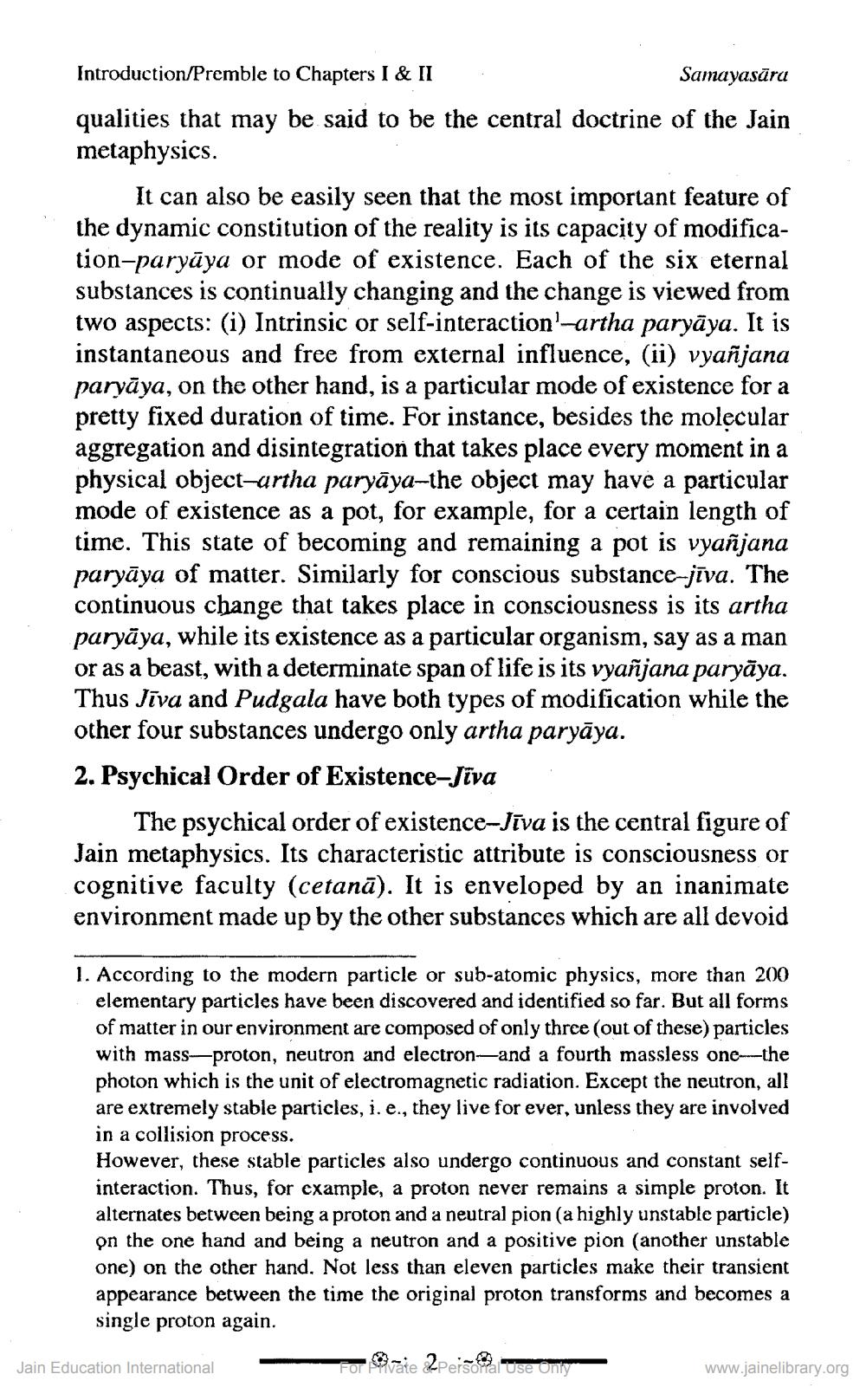________________
Introduction/Premble to Chapters I & II
Samayasāra
qualities that may be said to be the central doctrine of the Jain metaphysics.
It can also be easily seen that the most important feature of the dynamic constitution of the reality is its capacity of modification-paryāya or mode of existence. Each of the six eternal substances is continually changing and the change is viewed from two aspects: (i) Intrinsic or self-interaction-artha paryāya. It is instantaneous and free from external influence, (ii) vyañjana paryāya, on the other hand, is a particular mode of existence for a pretty fixed duration of time. For instance, besides the molecular aggregation and disintegration that takes place every moment in a physical object-artha paryāya-the object may have a particular mode of existence as a pot, for example, for a certain length of time. This state of becoming and remaining a pot is vyañjana paryāya of matter. Similarly for conscious substance-jīva. The continuous change that takes place in consciousness is its artha paryāya, while its existence as a particular organism, say as a man or as a beast, with a determinate span of life is its vyañjana paryāya. Thus Jīva and Pudgala have both types of modification while the other four substances undergo only artha paryāya. 2. Psychical Order of Existence-Jīva
The psychical order of existence-Jīva is the central figure of Jain metaphysics. Its characteristic attribute is consciousness or cognitive faculty (cetanā). It is enveloped by an inanimate environment made up by the other substances which are all devoid
1. According to the modern particle or sub-atomic physics, more than 200
elementary particles have been discovered and identified so far. But all forms of matter in our environment are composed of only three (out of these) particles with mass-proton, neutron and electron—and a fourth massless one-the photon which is the unit of electromagnetic radiation. Except the neutron, all are extremely stable particles, i. e., they live for ever, unless they are involved in a collision process. However, these stable particles also undergo continuous and constant selfinteraction. Thus, for example, a proton never remains a simple proton. It alternates between being a proton and a neutral pion (a highly unstable particle) on the one hand and being a neutron and a positive pion (another unstable one) on the other hand. Not less than eleven particles make their transient appearance between the time the original proton transforms and becomes a single proton again.
Jain Education International
For Sale 2 personal use only
www.jainelibrary.org




